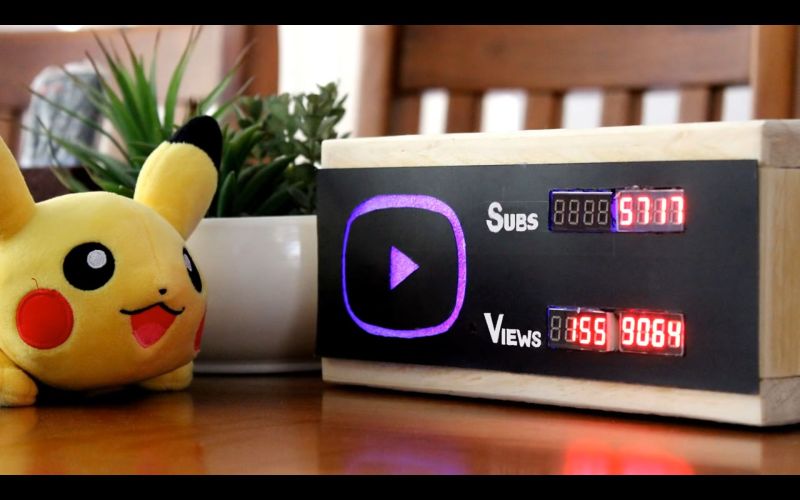How do you hack your motivation? Do you put red marker Xs on a paper calendar every day you exercise? Do you use an egg timer to sprint through dozens of emails? Do you lock all the doors and shut off your data to write some bulletproof code? If you are [Hulk], you build a YouTube Desktop Notifier showing his YouTube subscribers and views. This is his ticket to getting off the couch to make a video about just such a device. There is something poetic about building a mechanism to monitor its own success making a feedback loop of sorts. The Hackaday.io page follows the video, so anyone who wants to build their own doesn’t have to scribble notes while pausing the video which is also posted below the break.
The hardware list is logical, starting with a NodeMCU module programmed through the Arduino IDE. Addressable 7-segment displays show the statistics in red, but you can sub in your preferred color with the back-lighting LEDs. It should be possible to share the CLK pins on the displays if you are important enough to need more digits. [Hulk] already outlined a list of improvements including switching to addressable backlights and adding daily and monthly tracking.
Monitoring online values without a computer monitor is satisfying on a level because it shows what motivates us, whether that is Bitcoin or the weather.

















fun project, interesting video
I would like to sugest to add a piece of transparant red plastic in front of the displays (perhaps a piece of red candy plastic). That would improve readabillity of the display greatly during daytime. Although the video suggests that isn’t a problem.
So why bother? What a pointless suggestion
So on older alarm clocks and various other devices, they used a red film or red strip of plastic over any red LED segment displays. The reason was because the red light was intense and using a red strip of plastic helped tone down the light. Most older segment displays weren’t LCD based, but rather had a hollow chamber for each part of the number segment with a single red LED at the back of the cavity. To create the illusion of being a single lit side of a number they had to blend it all together by using a piece of semi transparent red plastic. On modules, like these here, the plastic film is built into the module but they are thin and designed at maximum brightness to be behind a tinted window so you couldn’t see the individual module sections and to tone down the brightness.
ehhmmm not entirely, as adding a piece of red plastic, you improve contrast greatly.
However, since the video shows the device next to his bed (an environment mostly dark) the improvement of contrast isn’t an issue for that specific situation. Which is what I meant by “the video suggests”.
Regarding “why bother”: to GREATLY improve contrast
Regarding “what a pointless suggestion”, you are partially right, though I’m sure others may benifit from this simple yet very effective suggestion that acocording to most 7-segment related builds on youtube, not many people seem to care about… so then we are back at the point “why bother…”